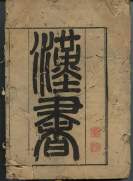 | How was the Book of Han finished? The History of the Former Han Dynasty is a classical Chinese history finished in 111 CE, covering the history of China under the Western Han from 206 BCE to 25 CE. It is also sometimes called the Book of Former Han. Various scholars have estimated that the earliest material covered in the book dates back to between 206 and 202 BCE. The book also contains the first written historical mention of Japan. This history developed from a continuation of Sima Qian's Records of the Grand Historian or, more correctly, Records of the Grand Scribe, initiated by Ban Gu's father, Ban Biao, at the beginning of the Later Han Dynasty. This work is usually
|
referred to as Later Traditions, which clearly indicates that the elder Ban's work was meant to be a continuation. After Ban Biao's death, his eldest son Ban Gu was dissatisfied with what his father had completed, and he began a new history that started with the beginning of the Han dynasty. This distinguished it from Sima Qian's history, which had begun with China's earliest legendary rulers. In this way, Ban Gu initiated the format for dynastic histories that was to remain the model for the official histories until modern times. For the periods where they overlapped, Ban Gu adopted nearly verbatim much of Sima Qian's material, though in some cases he also expanded it. He also incorporated at least some of what his father had written, though it is difficult to know how much. The completed work ran to a total of 100 fascicles, and included essays on law, science, geography, and literature. Ban Gu's younger sister Ban Zhao finished writing the book 19 years after Ban Gu had been imprisoned. An outstanding scholar in her own right, she is thought to have written volumes 13-20 and 26. |